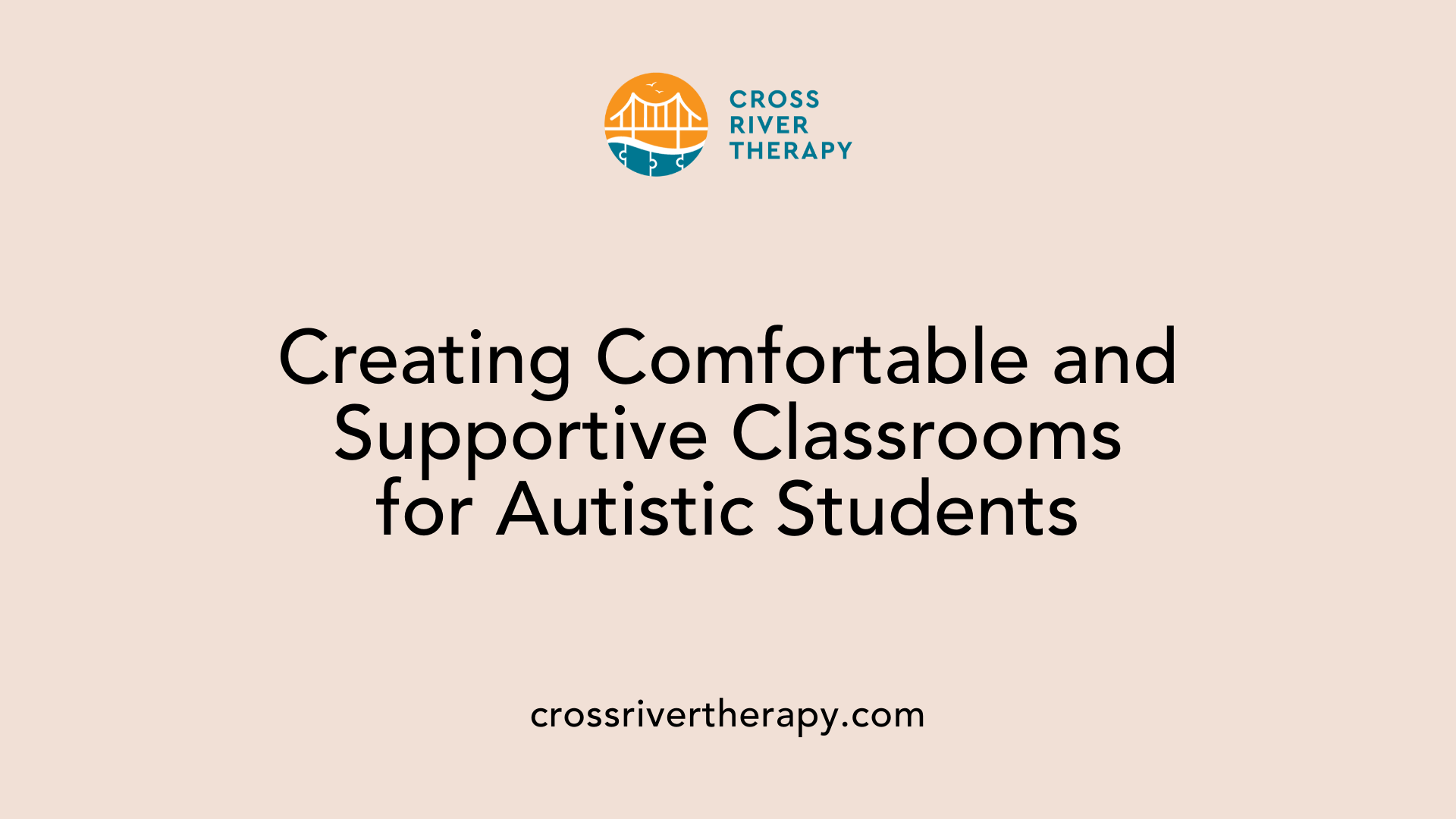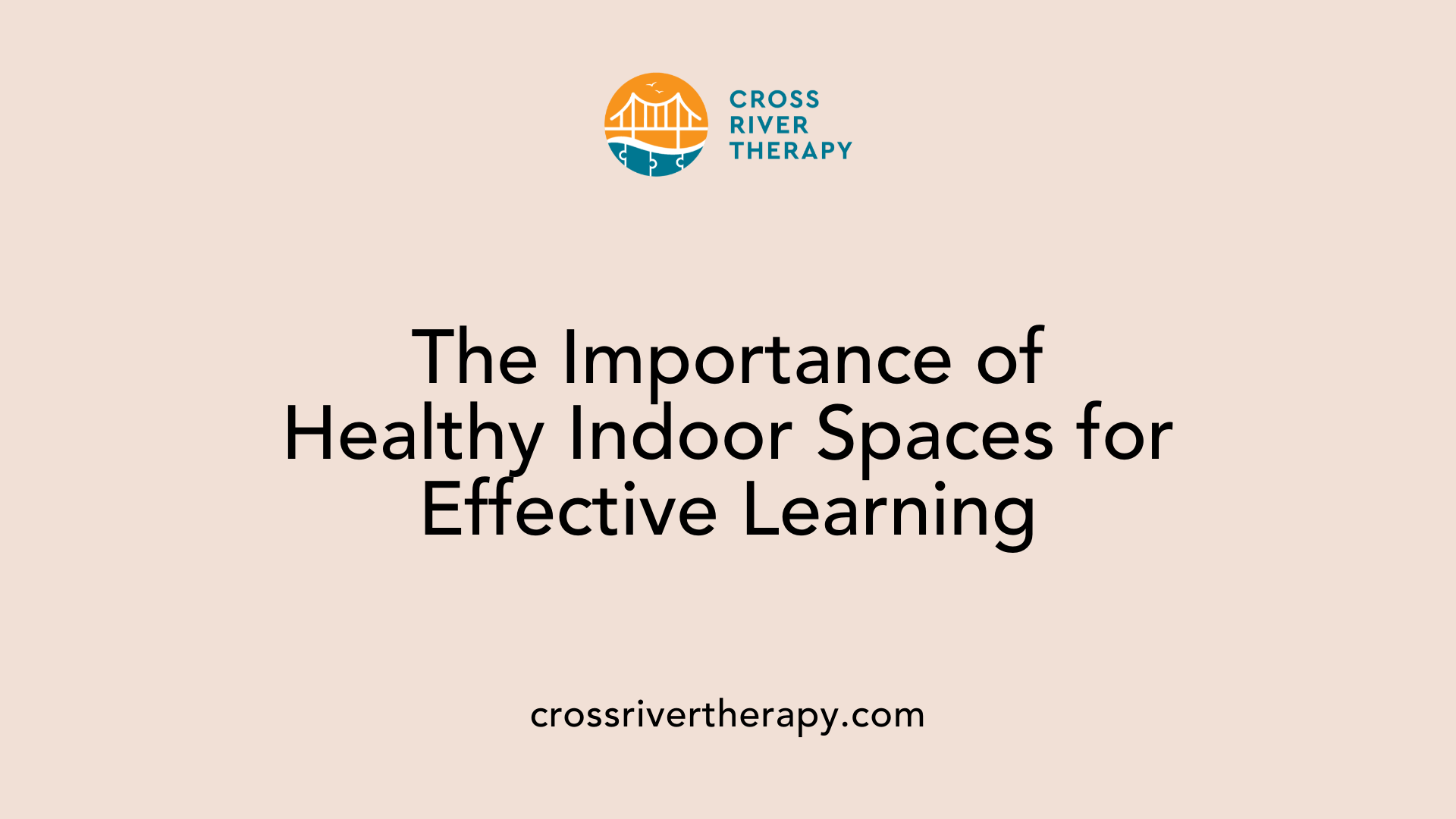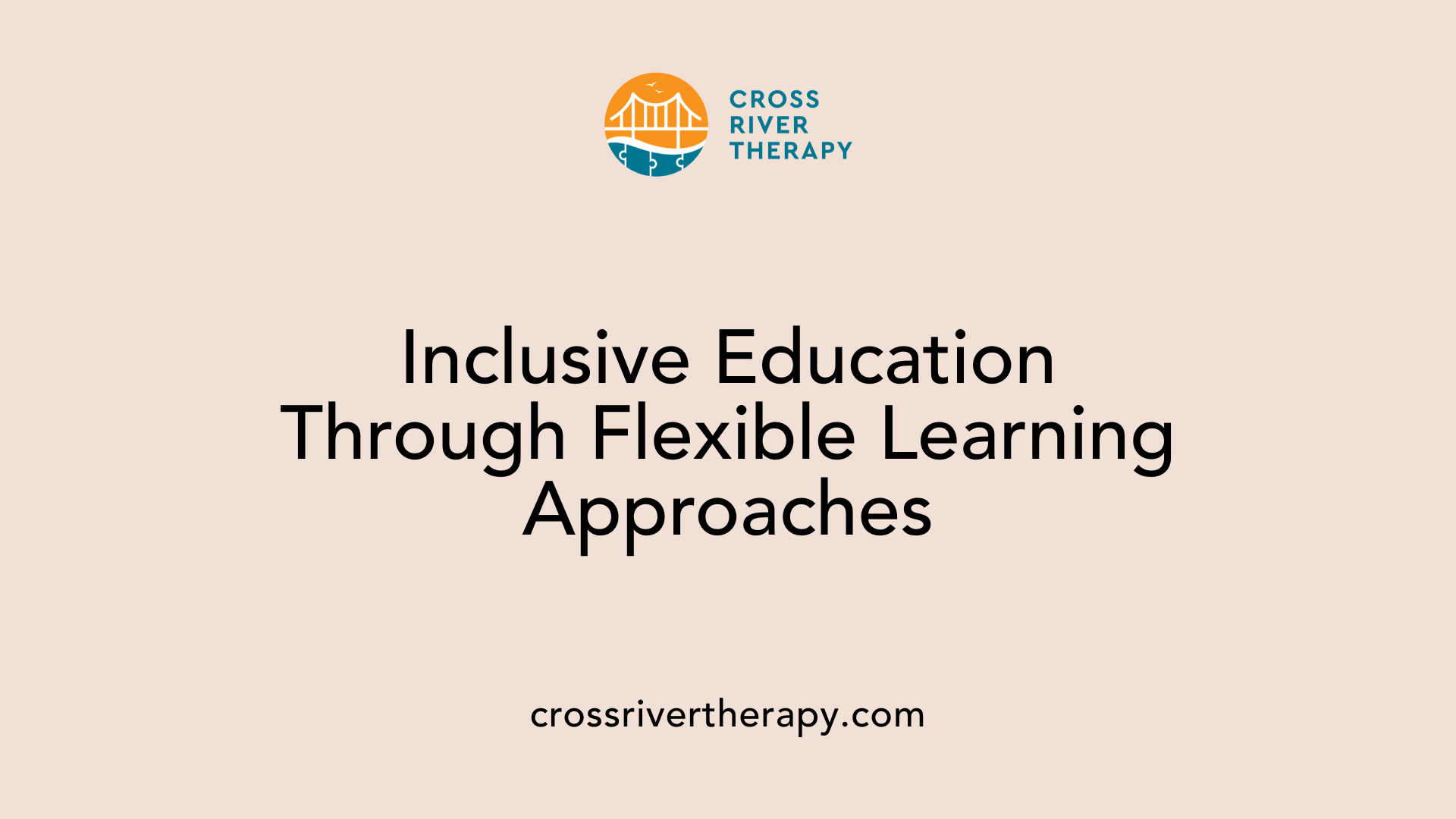Understanding Green Design in Autism Education
As the educational landscape evolves, green building and biophilic design principles are becoming crucial in designing autism schools. These approaches not only emphasize eco-friendliness but cater to the unique sensory and emotional needs of students with autism spectrum disorder (ASD). By integrating natural elements and sustainable practices, schools can create environments that support learning and promote well-being. This article delves into the innovative application of these principles in autism schools, revealing their impact on student outcomes and overall school environments.
The Role of Biophilic Design in Autism Education

What is biophilic design, and how can it benefit autism schools?
Biophilic design refers to creating environments that incorporate natural elements such as daylight, plants, and materials that evoke the natural world. In autism schools, this approach is especially beneficial as it enhances adaptive functioning and contributes to overall well-being. By integrating features like large windows and green spaces, biophilic design can significantly reduce sensory overload, which is a common challenge for autistic students.
This design philosophy not only fosters relaxation but also promotes engagement. When students are surrounded by nature-inspired elements, they tend to experience less stress, allowing for better focus and learning outcomes. The calming aesthetics and functionality of biophilic spaces create an educational atmosphere conducive to the unique needs of children with autism.
How do natural elements in design influence autistic children's engagement and well-being?
Natural elements in educational settings contribute positively to the well-being and engagement of autistic children. For instance, ample exposure to natural light has been linked to improved mood and cognitive function. This exposure can help stabilize sleep patterns by regulating melatonin levels, which are often disrupted in individuals with autism.
Furthermore, incorporating plants and outdoor sensory spaces allows students to interact with their environment in meaningful ways. Such natural features not only beautify the space but also act as calming agents, reducing anxiety and improving social interactions. Research indicates that these interactions are vital for enhancing engagement in educational activities, ultimately leading to a more supportive learning environment for neurodivergent students.
| Aspect |
Benefits for Autistic Students |
Natural Elements Included |
| Adaptive Functioning |
Improves ability to cope with sensory challenges |
Natural lighting, soothing colors |
| Engagement |
Increases participation and focus in learning activities |
Plants, outdoor sensory areas |
| Well-being |
Reduces anxiety and overall stress levels |
Textures and materials resembling nature |
| Learning Outcomes |
Enhances academic performance and social interactions |
Integration of nature throughout the school |
Biophilic design is a step towards creating autism-friendly environments that nurture the well-being and development of all students.
Essential Features of Sensory-Friendly Spaces

What are the features of sensory-friendly classroom design?
Sensory-friendly classrooms are designed with various elements to support the specific needs of autistic students. Key features include:
- Flexible Seating Arrangements: This allows students to choose where and how they sit, accommodating their comfort and focus levels.
- Visual Organization: Clear visual cues and structured layouts help students navigate their environment easily, reducing confusion.
- Designated Quiet Zones: These areas offer students a place to retreat when feeling overwhelmed, providing a calming space to regroup.
- Soft, Muted Color Schemes: Non-distracting colors minimize visual overstimulation, promoting a more tranquil atmosphere conducive to learning.
How does sensory-friendly design improve learning outcomes for autistic students?
By customizing spaces to meet the sensory needs of students with autism, sensory-friendly design significantly enhances their educational experience. The reduction of distractions and sensory overload fosters:
- Improved Concentration: With less environmental clutter, students can focus better on their tasks.
- Enhanced Learning Engagement: Comfortable settings promote more active participation in learning activities.
- Emotional Stability: Calming environments can reduce anxiety levels, allowing students to manage their emotions effectively.
These tailored environments lead to better academic performance and overall well-being for autistic students, showcasing the profound impact of sensory-friendly design in educational settings.
Green Building Practices: Enhancing Indoor Environment Quality

Importance of indoor air quality
Indoor air quality (IAQ) is a crucial component of green building practices, especially in educational settings for students with autism. There is a clear link between IAQ and student performance; clean air can reduce illness, absenteeism, and even distractions during learning. For autistic students, who may already have sensitivities to environmental factors, maintaining high indoor air quality can enhance their cognitive functions and overall well-being.
Incorporating effective ventilation systems and using air purifiers can help ensure that classrooms remain welcoming and conducive to learning. The reduction of indoor pollutants through the use of natural and non-toxic materials further strengthens the educational environment for these students.
Material choices for autism schools
Material selection is vital in improving the learning experience in autism schools. Green building design promotes the use of low-VOC (volatile organic compounds) materials, which are less harmful and result in better indoor air quality. These materials help create an environment that is not only safer but also more functional for autistic students, who might struggle with sensory overload triggered by certain smells or chemicals.
The integration of non-toxic finishes and sustainable materials ensures that classrooms do not contribute negatively to a student's sensory experience. When children can learn in a space free from harmful chemicals, their comfort and focus improve significantly.
| Element |
Benefit |
Details |
| Low-VOC Materials |
Healthier environment |
Less harmful emissions, suitable for sensory sensitivity |
| Natural Finishes |
Enhanced comfort |
Reduces sensory overload and decreases anxiety for students |
| Effective Ventilation |
Improved indoor air quality |
Reduces respiratory issues and promotes well-being |
Incorporating Renewable Energy in Autism Schools

What renewable energy solutions are applicable to autism schools?
Autism schools can leverage various renewable energy solutions, predominantly solar panels and wind turbines. These technologies enable schools to harness clean energy, which helps to significantly reduce their carbon footprints and operational costs. By incorporating renewable energy sources, educational facilities for autistic students can become environments that are not only energy-efficient but also sustainable, thus promoting a healthier, more conducive learning atmosphere.
How does using renewable energy enhance learning environments?
Utilizing renewable energy contributes to a quieter and more serene learning atmosphere by diminishing noise pollution typically associated with traditional energy sources. Quieter environments are crucial for autistic students, who often struggle with sensitivity to sound. Furthermore, enhanced air quality results from reduced emissions and pollution, which supports the sensory needs of these learners. Improved indoor environments foster comfort and focus among students, addressing their unique requirements for successful educational experiences.
| Renewable Energy Solutions |
Benefits for Autism Schools |
Impact on Learning Environment |
| Solar Panels |
Reduces operational costs; utilizes clean energy |
Enhances air quality and comfort |
| Wind Turbines |
Lowers carbon footprint; sustainable energy source |
Minimizes noise pollution |
Incorporating renewable energy in autism schools is far more than an eco-friendly initiative; it reshapes the educational environment into one that prioritizes the well-being of every student.
Universal Design for Learning: A Framework for Inclusion

What is the Universal Design for Learning, and why is it important for autism schools?
Universal Design for Learning (UDL) is a guiding framework aimed at creating flexible educational environments that cater to the varying needs of all learners. In autism schools, this approach is essential as it acknowledges the diversity in learning styles and cognitive processes among students. UDL fosters accessibility by integrating diverse methods of teaching, which are particularly critical for students with unique neurological profiles, such as those on the autism spectrum.
This flexibility ensures that teaching methods adapt to the strengths and preferences of each student, providing multiple pathways to learning. By reducing barriers to participation, UDL supports a more inclusive educational landscape where every child can thrive.
How does UDL contribute to engagement in autism education?
UDL enhances engagement in autism education by offering multiple means of representation, expression, and engagement. This multifaceted approach encourages autistic students to engage with material in ways that resonate with their individual strengths. For example, visual learners might benefit from diagrams and videos, while others may prefer hands-on activities to grasp concepts more effectively.
By presenting information in varied formats, UDL ensures that students remain engaged and motivated. This tailored approach not only promotes active participation but also boosts retention, as students feel empowered to express their understanding through their preferred modes—be it verbal, visual, or kinesthetic. In this way, UDL not only transforms the learning experience but also fosters a sense of belonging and achievement among all students, cultivating a supportive environment that nurtures growth and development.
The Impact of Natural Light on Learning
Natural light in educational settings
Natural light holds significant importance in educational environments, particularly for students with autism. Its use helps to create welcoming spaces that are conducive to learning and emotional regulation. In autism-friendly buildings, integrating ample windows and skylights allows sunlight to penetrate classrooms, minimizing reliance on harsh fluorescent lighting that can often overwhelm sensitive students.
Benefits for autistic students
The benefits of natural light for autistic students are multifaceted. Here are some key points:
- Mood Enhancement: Natural light contributes to a more uplifting atmosphere, improving the overall mood of students and reducing feelings of anxiety.
- Cognitive Function: Studies suggest that natural light stimulates cognitive functions, enhancing students’ ability to focus and retain information.
- Sleep Patterns: Exposure to natural light influences melatonin regulation, which can lead to better sleep quality and restfulness, essential for optimal learning.
Both teachers and students experience the positive effects of natural light, fostering an easier navigation of learning tasks. Thus, implementing good design practices that prioritize natural lighting translates into improved academic performance among students with autism, supporting a holistic approach to their educational experience.
Energy Efficiency: Lower Costs and Higher Comfort
What energy-efficient systems can be implemented in autism schools?
Autism schools can greatly benefit from various energy-efficient systems designed to create supportive learning environments. Some effective measures include:
- LED Lighting: These energy-saving bulbs not only cut down on electricity costs but also offer consistent, flicker-free illumination, reducing glare and distractions for students with sensory sensitivities.
- Advanced HVAC Systems: High-efficiency heating, ventilation, and air conditioning systems help maintain comfortable temperatures while improving indoor air quality, which is essential for student focus and regulation.
- Smart Building Technologies: Utilizing smart systems for lighting and climate control allows schools to optimize energy usage and respond dynamically to occupancy levels, further enhancing the comfort of the learning environment.
How do energy-efficient systems benefit schools for students with autism?
Implementing energy-efficient systems leads to several operational benefits for schools catering to students with autism:
- Lower Operational Costs: With reduced energy consumption, schools can allocate financial resources more effectively, potentially enhancing programming and support services for autistic students.
- Enhanced Comfort: Proper ambient conditions foster tactile and thermal comfort while also minimizing disruptive noise levels—a crucial factor in preventing sensory overload.
- Stable Environment: By promoting quieter learning spaces, energy-efficient systems help create environments where autistic students can thrive, facilitating better focus and engagement in their education.
Collaborative Design Process for Autism-Friendly Schools
Why is stakeholder collaboration important in designing autism schools?
Engaging stakeholders such as educators, therapists, parents, and students is critical in creating autism-friendly environments. By considering diverse perspectives, the design process can address the specific needs and challenges faced by students with autism. This collaboration fosters a sense of community and ownership, ensuring that all voices are acknowledged and represented.
What design considerations should be taken into account?
Effective design for autism schools requires careful attention to a range of elements:
- Acoustic Control: Ensuring noise levels are minimized to create a conducive learning environment.
- Natural Lighting: Incorporating windows and open spaces to enhance students' mood and well-being.
- Flexible Spaces: Designing areas that can adapt to different needs, such as quiet zones or sensory rooms.
- Color and Material Choices: Using soft, muted colors and natural materials to reduce visual clutter and enhance comfort.
- Safety Features: Including secure outdoor play spaces and clear emergency protocols to safeguard students.
By aligning these design considerations with stakeholder input, autism schools can become more inclusive and supportive spaces.
How do eco-friendly design practices support health in autism schools?
Eco-friendly practices significantly enhance the health and well-being of students with autism through multiple avenues.
Improved Indoor Air Quality: Green building designs utilize low-VOC (volatile organic compounds) materials that reduce harmful emissions. This leads to healthier breathing conditions crucial for students often sensitive to air quality.
Natural Lighting: Incorporating ample natural light not only enhances mood and comfort but also positively impacts sleep patterns. This is particularly beneficial for individuals with autism, whose routines and sleep can be adversely affected by harsh artificial lighting.
Exposure to Green Spaces: Schools designed with outdoor areas and gardens allow for sensory-rich environments where students can relax and feel less overstimulated.
Sustainable Practices: Employing strategies such as renewable energy sources minimizes environmental stressors, contributing to a serene school atmosphere.
What is the importance of green spaces for autistic students?
Green spaces in educational settings play a vital role in the development of autistic students. Here are some benefits:
- Reduced Overstimulation: Nature provides a calming backdrop away from the hustle of chaotic indoor environments, allowing autistic students to regroup and recharge.
- Encouragement of Physical Activity: Natural environments motivate students to engage in physical play, which is essential for managing anxiety and energy levels.
- Facilitated Social Interactions: Green spaces create informal opportunities for socialization, helping students build relationships and develop communication skills.
In summary, eco-friendly practices do not merely enhance the aesthetic appeal of autism schools; they are instrumental in crafting healthier and more supportive learning environments that promote the well-being of all students, particularly those with autism.
Case Studies and Success Stories
Can you provide examples of successful green building projects in autism education?
Many autism schools have embraced innovative green building practices, achieving notable successes. For instance, several institutions have pursued LEED certification to enhance energy efficiency and environmental quality. This certification not only signifies a commitment to sustainability but also mirrors a tailored approach to the sensory needs of autistic students.
Schools that integrate biophilic design have seen significant improvements in both student well-being and academic performance. Natural elements—like increased daylight, natural ventilation, and sensory gardens—have been strategically incorporated to lower stress levels and improve focus.
Moreover, case studies show that environments enriched with natural features contribute to better social interactions among students. As students engage with their surroundings, they experience enhanced emotional regulation and adaptability, which are vital for fostering supportive learning atmospheres.
Incorporating sustainable materials and energy-efficient systems also results in lower operational costs and improved indoor air quality. Thus, these green building strategies not only benefit the students but also create a healthier, more engaging learning environment for all.
Future Prospects and Continued Developments
The adoption of green building and biophilic design in autism schools signifies a critical advancement in education for neurodiverse learners. As more institutions adopt these approaches, the potential for improved learning environments and student outcomes becomes increasingly evident. Moving forward, continued research and innovation will be essential in expanding the reach and effectiveness of these designs, ensuring schools provide the best possible environments for all students, particularly those with autism. By prioritizing sustainability and sensory-sensitive design, educational settings can truly cater to the diverse needs of their populations, fostering both academic and personal growth.
References